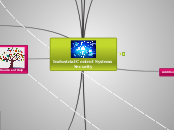OT vs IT
Architecture
Besides being pervasive in our personal lives, IT is
a relatively standardized world, and that is far
more homogeneous than OT.) IT also tends to
adapt far more quickly to multiple computing
trends, from PCs to Internet to mobility, all of
which have broadly shaped today’s Corporate IT
strategy.
In contrast, OT is filled with silos of proprietary
architectures because of its task‐specific nature. For
example, a refinery is designed so it can run continuously
for 5+ years before it is shut down for maintenance. In
other words, reliability can often trump innovation, open
architecture, interoperability, etc.
Focus
The IT software portfolio is people‐centric in the
sense that it helps people “make money” by
managing and coordinating the higher‐level
processes and transactions of the business.
In contrast, the OT portfolio is largely “thing‐centric” in the
sense that it helps “make product” by controlling the
physical equipment with a great deal of precision (and
safety), where the human’s role is supervisory (as
automation increases.)
End‐Point
The end‐point being managed is often a human
(whose job tends to be information‐intensive)
using a computing device (that has been relatively
homogeneous until the recent and growing BYOD
[bring your own device] trend.)
The end‐point being managed is often a physical asset such
as pumps, motors, conveyors, valves, forklifts, etc., where
these “things” come in all shapes, sizes, level of complexity,
versions and vintage.
Scope & Ownership
IT
Covers the spectrum of systems that support
corporate functions like Finance, HR, Supply
Chain, Order Management, Sales, etc. Functions
and their processes tend to have commonality
across industries.
OT
Covers the spectrum of systems that deal with the physical
transformation of products and services. They are task‐
specific systems, are highly customized for industries and
considered mission‐critical. They typically fall under the
domain of Engineering.
Industrial Control Systems Security
Actividad No. 3 Sistemas de Información Industrial
Fundamental Concepts
Safety and Security
Program Maturity
Foundational Requirements
Security Levels
Zones and Conduits
Security Life Cycle
Sources of Help
In typical order of usefulness…
Applications
Collaboration between safety and security
New approaches to program definition
System segmentation is an accepted concept
IT and OT; What’s the point?
Common Questions
“IT or Engineering
control of the
network?”
“What products and
technologies are
suitable?”
“How do I
manage my
risks?”
“How do I manage
patches?”
“What are the
real threats?”
“Separate or
Interconnected
Networks?”
Understanding it is essential for success in
many areas, including Security
Distinction is nonetheless real
Old wine in new bottles
Changing the Conversation
Know what you are trying to achieve, and
why
Speak in plain language, not “cyber speak”
Focus on process capability and potential
consequence
Less Fear, Uncertainty and Doubt (FUD)
Creating the Program
Establish and implement measurements
Identify objectives
Assess current performance
Establish program structure
Technology
Process
People
Understand the Fundamental Concepts
Identify sources of “Help”
Expectations and Regulation
Standards
Practices and Guidance
OT – IT Partnership
With an understanding of consequences…
Additional Resources
Consequence
Be wary of statements like
“Why would anyone do that.”
“Well, that could never happen.”
Expand to include areas where:
»Devices don’t act as they are designed
»People don’t act as they are supposed to
Subtema
Be realistic
This is the focus for asset owners!
Vulnerability
Do vulnerabilities mean bad things will
happen?
Well‐crafted malware can exist for months or years before detected
Will always exist in industrial systems
»“Zero‐Day” and “Forever‐Day”
Threat
Context is important!
Some details may be classified or otherwise protected
Often vague and/or non‐specific
»“There’s a virus in the wild!”
»Sources include US‐CERT and ICS‐CERT
Determined as a result of Intelligence
Gathering
Basic elements
NIST Framework
Product certification
The Challenge
Risk is real
But it is consequence that is our focus
Each element has a specific response, from a specific perspective

